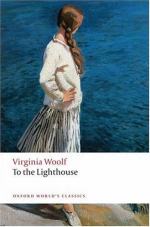|
This section contains 9,388 words (approx. 32 pages at 300 words per page) |

|
SOURCE: “Woolf's Metaphysics of Tragic Vision in ‘To the Lighthouse,’” in Philological Quarterly, Vol. 75, Winter, 1996, pp. 109–32.
In the following essay, Levy argues that “at the most profound level, To the Lighthouse portrays the journey toward tragic vision, where the object perceived is the transience of the perceiving subject and the tendency of time to efface the structure on which personal stability depends.”
In “The Brown Stocking,” a much quoted chapter of his celebrated study, Mimesis: The Representation of Reality in Western Literature, Eric Auerbach argues that To the Lighthouse inverts the conventional relation in fiction between inner and outer events: “In Virginia Woolf's case the exterior events have actually lost their hegemony, they serve to release and interpret inner events, whereas before her time … inner movements preponderately function to prepare and motivate significant exterior happenings.”1 According to his analysis of the novel, events external to character are subordinate...
|
This section contains 9,388 words (approx. 32 pages at 300 words per page) |

|


